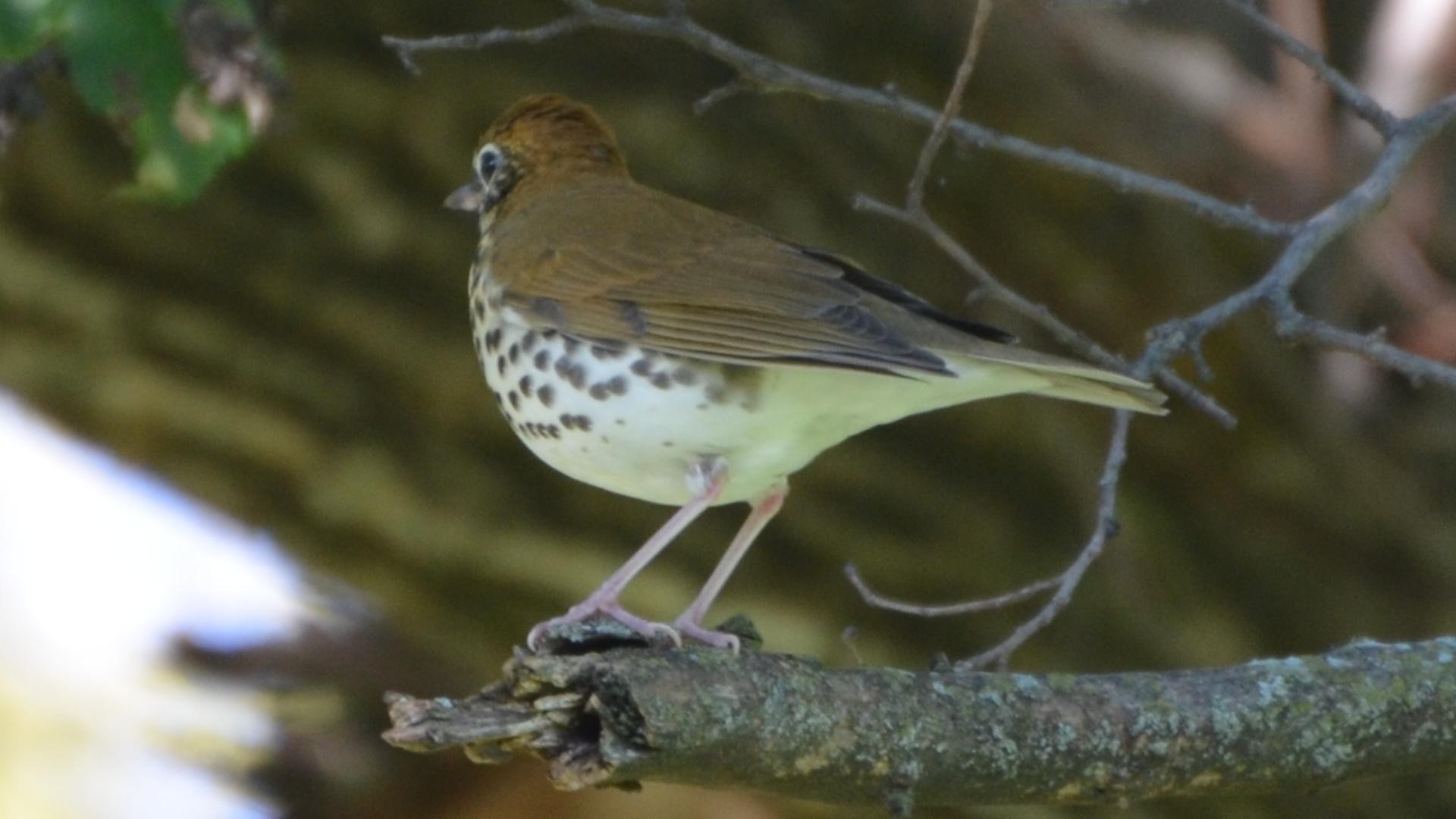Wood Thrush
A species of Wood Thrushes Scientific name : Hylocichla mustelina Genus : Wood Thrushes
Wood Thrush, A species of Wood Thrushes
Botanical name: Hylocichla mustelina
Genus: Wood Thrushes
Content
Description People often ask General Info
 Photo By Andy Reago & Chrissy McClarren , used under CC-BY-2.0 /Cropped and compressed from original
Photo By Andy Reago & Chrissy McClarren , used under CC-BY-2.0 /Cropped and compressed from original Description
It is distinctly larger than the Catharus thrushes with which the species is often sympatric but slightly smaller than the common American robin. The crown, nape, and upper back are cinnamon-brown, while the back wings, and tail are a slightly duller brown. The breast and belly are white with large dark brown spots on the breast, sides, and flanks. It has white eye rings and pink legs. Other brownish thrushes have finer spotting on the breast. The male and female are similar in size and plumage. 
Size
20 cm
Life Expectancy
8 years
Nest Placement
Tree
Clutch Size
3 - 4 eggs
Incubation Period
1 - 2 broods
Number of Broods
12 - 15 days
Nestling Period
12 - 15 days
Feeding Habits
Wood Thrush's diet primarily consists of leaf-litter invertebrates like beetles, caterpillars, and ants, complemented by fruits such as blueberries and dogwoods. Parents feed offspring soft bugs and fruit. Post-breeding, wood Thrush favors lipid-rich fruits to fuel migration. Omnivorous year-round, they incorporate more fruits in late summer, fall, and winter.
Habitat
Wood Thrush occupy mature deciduous and mixed forests in eastern North America, with abundant trees like beech and oaks over 50 feet tall. They need moderately dense understories, moist ground, and nearby water for optimal habitats. In winter, they seek mature, broad-leaved tropical forests with dense understories and occasionally adapt to forest edges and secondary growth.
Nest Behavior
Wood Thrush's nesting behavior involves the female erecting the nest over 3–6 days, with the male suggesting sites. Wood Thrush may raise two broods annually, but multiple attempts can occur. Following a successful brood, the next nest is often nearby, within 300 feet, while an unsuccessful attempt might lead to a more extensive search for a new location.
Nest Characteristics
Wood Thrush typically constructs its nest in lower branches of saplings or shrubs, utilizing a supportive fork, with twigs or foliage for shade and cover. The nest features walls 2–6 inches high built with grass, leaves, stems, and sometimes synthetic materials, forming a cup 4–6 inches across. A distinguishing feature includes a mud-lined interior cup measuring about 3 inches, finished with a layer of fine rootlets.
Dite type
Insectivorous
People often ask
General Info
Feeding Habits
Bird food type
Bird Feeder Type

Platform
Sounds
Call
Recording location: Costa Rica
Call
Recording location: Mexico
Song
Recording location: United States
Behavior
Throughout the day, wood Thrush engage in a variety of activities that reflect their adaptation to forested environments. Males are known for their distinctive, echoing ee-oh-lay song, which is used to establish and maintain territories. These birds often sing from dawn to dusk from strategic perches, their song resonating through the trees. Courtship includes females initiating pairing with silent, low flight chases followed by shared perching. Once paired, wood Thrush are mutually defensive of their domain, using subtle threat displays to deter intruders. Their foraging behavior involves hopping and searching the leaf litter for insects, and while they mainly forage alone, they may forage in mixed flocks in their winter habitats. Surveillance interruptions during foraging are typical, revealing their cautious nature. Social monogamy characterizes their pair bonds, yet they are not exclusively monogamous. Annually, pairs are re-established, signaling a new cycle of mating and territorial defense.
Distribution Area
The wood thrush's breeding range extends from Manitoba, Ontario and Nova Scotia in southern Canada to northern Florida and from the Atlantic coast to the Missouri River and the eastern Great Plains. It migrates to southern Mexico through to Panama in Central America in the winter, mostly in the lowlands along the Atlantic and Pacific coasts. It generally arrives on the U. S. Gulf Coast during the first week of April. 
Species Status
The wood thrush has become a symbol of the decline of Neotropical songbirds of eastern North America, having declined by approximately 50% since 1966. Along with many other species, this thrush faces threats both to its North American breeding grounds and Central American wintering grounds. Forest fragmentation in North American forests has resulted in both increased nest predation and increased cowbird parasitism, significantly reducing their reproductive success. 

 Photo By Andy Reago & Chrissy McClarren , used under CC-BY-2.0 /Cropped and compressed from original
Photo By Andy Reago & Chrissy McClarren , used under CC-BY-2.0 /Cropped and compressed from original Scientific Classification
Phylum
Chordates Class
Birds Order
Perching birds Family
Thrushes Genus
Wood Thrushes Species
Wood Thrush